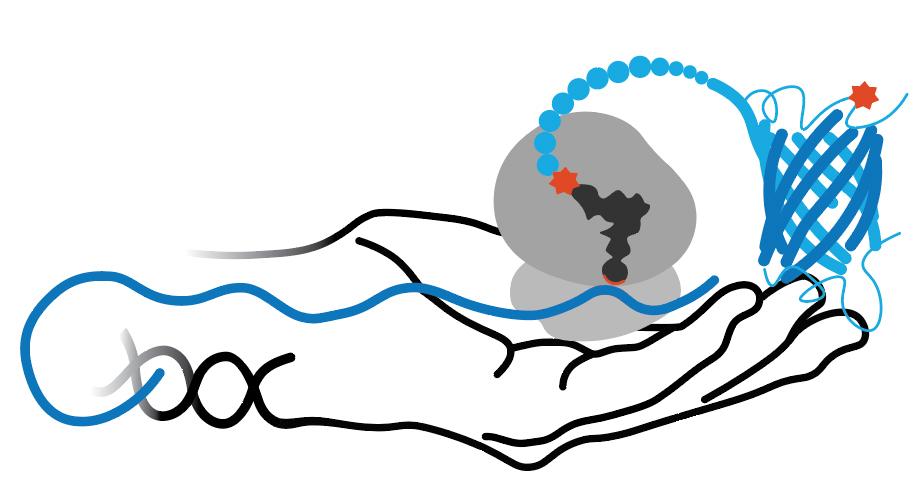RS/tRNA Foundational Publication Support
Eddins, Alex J, Riley M Bednar, Subhashis Jana, Abigail H Pung, Lea Mbengi, Kyle Meyer, John J Perona, Richard B Cooley, Andrew Karplus, and Ryan A Mehl. (2023) 2023. “Truncation-Free Genetic Code Expansion With Tetrazine Amino Acids For Quantitative Protein Ligations.”. Bioconjugate Chemistry 34 (12): 2243-2254. doi:10.1021/acs.bioconjchem.3c00380.
RS/tRNA Pair Development Year
2023
ncAA(s) Incorporated
Tet2-Et
ncAA Structure (png, jpg, jpeg)

ncAA Utility
An amino acid that contains a 1,2,4,5-tetrazine-ethyl group that can be used for bioorthogonal, click-chemistry reactions (bioconjugation) when reacted with trans-cyclooctenes (TCOs) which can themselves be bound to various moieties such as PEG linkers, fluorophores, spin labels, etc.. These click reactions require no catalysts and can be carried out either in vivo or in vitro. Also, when reacted with strained TCOs (sTCOs), the reaction rates are extremely fast, achieving second order rate constants in excess of 10,000 per molar per second.
RS Organism of Origin
Parent RS
RS Mutations
Y32G
L65A
H70M
F108S
Q109E
D158G
L162N
L65A
H70M
F108S
Q109E
D158G
L162N
tRNA Organism of Origin
Parent tRNA
tRNA Anticodon
CUA
Other tRNA Mutations
N/A
RS/tRNA Availability
The pAJE3-E7 expression plasmid can be purchased through Addgene: Plasmid #214359.
The RF1-deficient E. coli strain B-95(DE3) ΔA Δ-fabR strain was provided by RIKEN BRC through the National BioResource Project of MEXT/AMED, Japan.
BL21(DE3)s and DH10Bs were purchased from Thermofisher.
Tet2-Et can be purchased at the GCE4All site, here:
https://gce4all.oregonstate.edu/tetrazine-amino-acids
The RF1-deficient E. coli strain B-95(DE3) ΔA Δ-fabR strain was provided by RIKEN BRC through the National BioResource Project of MEXT/AMED, Japan.
BL21(DE3)s and DH10Bs were purchased from Thermofisher.
Tet2-Et can be purchased at the GCE4All site, here:
https://gce4all.oregonstate.edu/tetrazine-amino-acids
Used in what cell line?
RS/tRNA Additional Notes
This RS incorporates both oxidized and reduced Tet-ncAA forms, and when expressed in BL21 cells using the newly developed pAJE3 expression plasmid, it leads to high fidelity incorporation of Tet2-Et at position 150 of sfGFP. It also lead to good expression with >95% Tet2-Et incorporation even in RF1-deficient B95 cells (which inherently remove truncation, and for which near-cognate suppression can be a serious problem). This GCE system in B95 cells was then also shown to yield the truncation-free herceptin Fab with Tet2-Et quantitatively incorporated. The permissivity of the Tet2-Et E7RS has not been tested.
